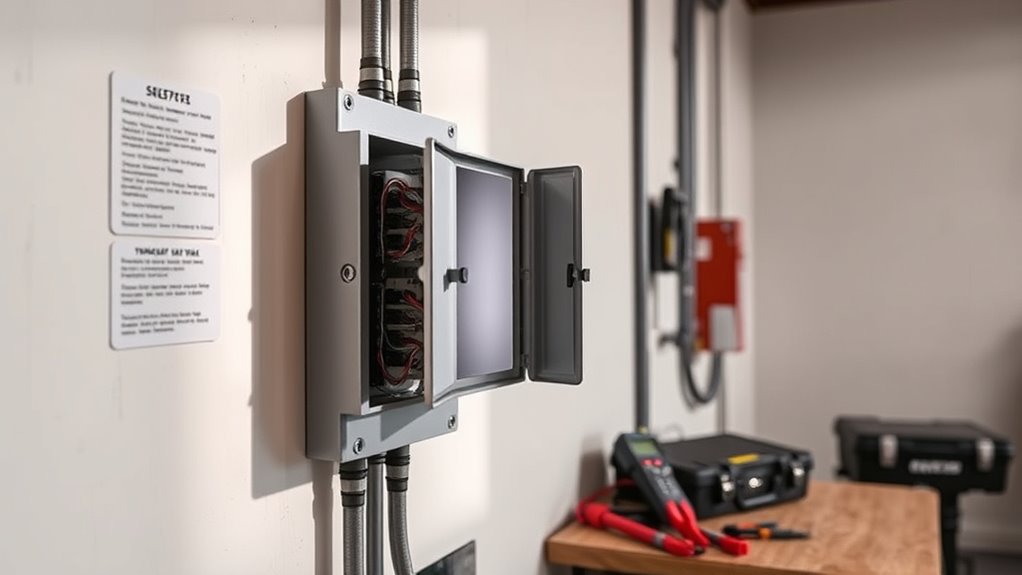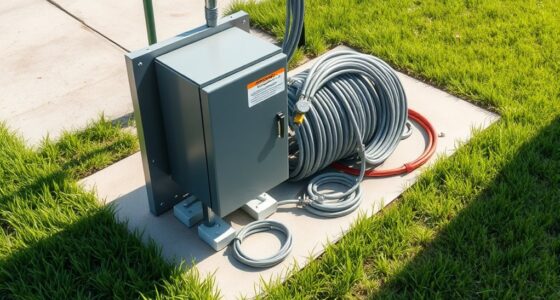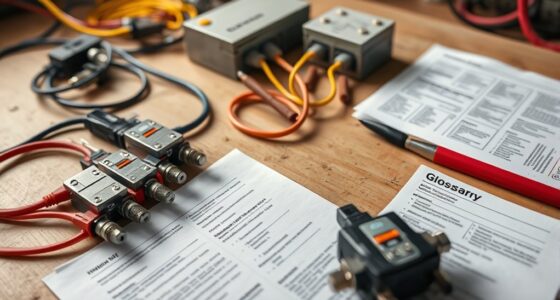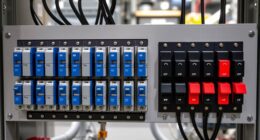When installing a transfer switch, don’t believe placement doesn’t matter—location impacts safety, efficiency, and code compliance. You should position it in an accessible, dry spot near your main panel, avoiding moisture or debris. Good wiring, proper grounding, and following local standards are vital. Many misconceptions can lead to hazards or system failures. To guarantee safe, reliable operation, it’s essential to understand what really influences placement—keep exploring to learn all the key considerations.
Key Takeaways
- Proper placement ensures safety, code compliance, and reliable operation during outages.
- Install the transfer switch close to the main panel for easier wiring and maintenance access.
- Choose a dry, accessible location protected from moisture, debris, and environmental hazards.
- Use quality wiring and proper grounding techniques to prevent electrical hazards and system damage.
- Avoid shortcuts; professional installation helps ensure safety, efficiency, and warranty compliance.
Common Misconceptions About Transfer Switch Placement
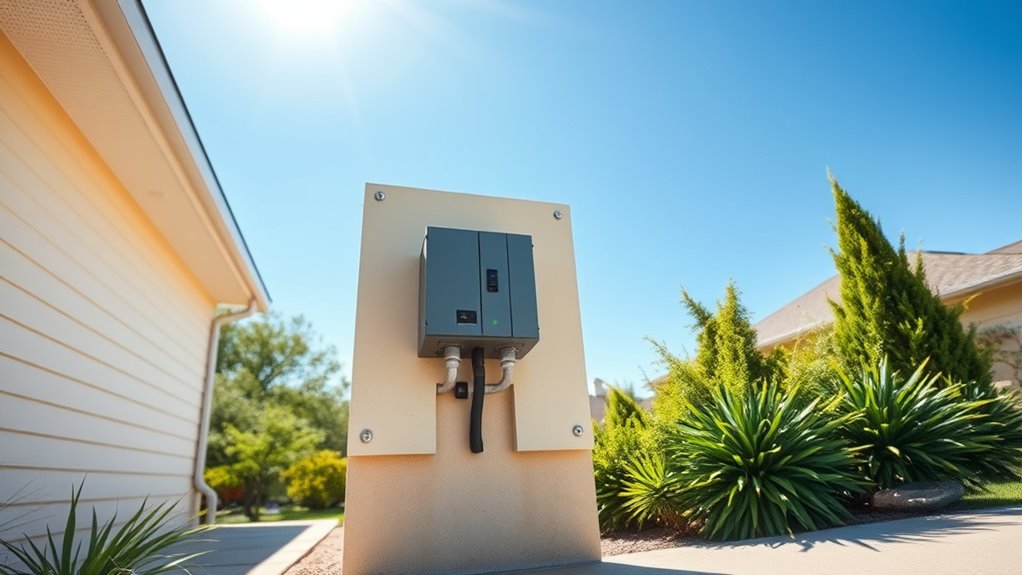
Many people believe that a transfer switch can be installed anywhere in their electrical system without consequences, but this is a common misconception. Transfer switch myths often suggest that placement doesn’t matter, leading homeowners to overlook critical safety and efficiency factors. These placement misconceptions can cause issues like electrical hazards, equipment damage, or unreliable power transfer during outages. Proper placement isn’t just about convenience; it’s about ensuring your system functions correctly and safely. Incorrect installation may also violate local codes or void warranties. To avoid these pitfalls, it’s essential to understand that where you install your transfer switch considerably impacts its performance. Proper placement can improve safety, efficiency, and compliance with electrical standards. Don’t fall for myths that suggest placement is arbitrary—doing it right saves you time, money, and potential safety risks.
Essential Factors That Influence Proper Placement
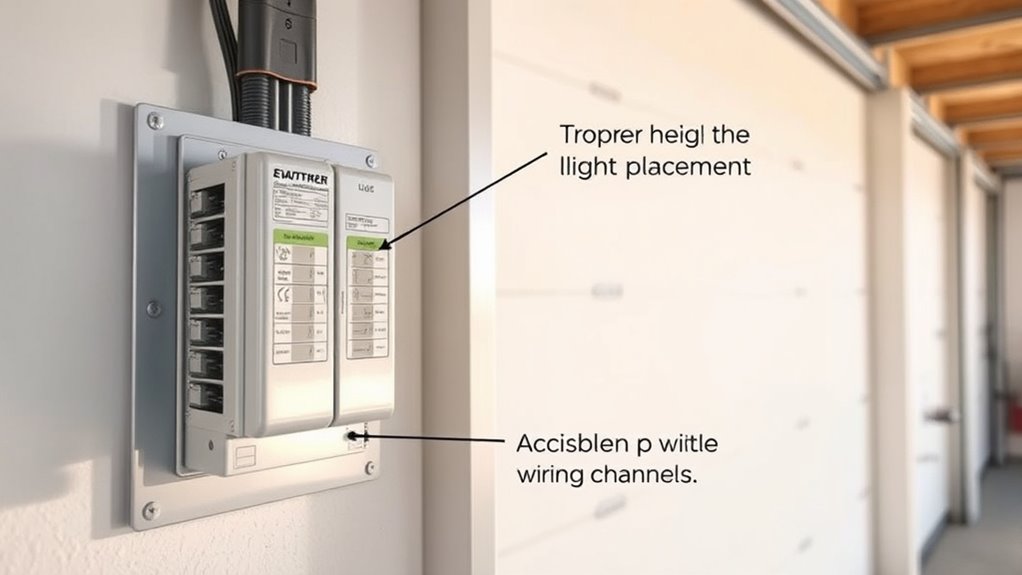
Choosing the right location for your transfer switch is essential because it directly affects safety, convenience, and system performance. Proper placement guarantees easy access for maintenance, minimizes wiring lengths, and promotes efficient operation. Grounding techniques play a critical role; your transfer switch must be grounded correctly to prevent electrical hazards and ensure reliable operation. Additionally, local code requirements dictate specific placement standards, such as clearance space and environmental conditions, to meet safety and legal standards. Consider factors like proximity to the main electrical panel, outdoor vs. indoor placement, and potential exposure to moisture or debris. Incorporating lifestyle considerations, such as ease of access and environmental protection, can further enhance the effectiveness of your transfer switch. Adhering to these essential factors helps you avoid costly errors and ensures your transfer switch functions safely and effectively over time.
Best Practices for Safe and Effective Transfer Switch Installation
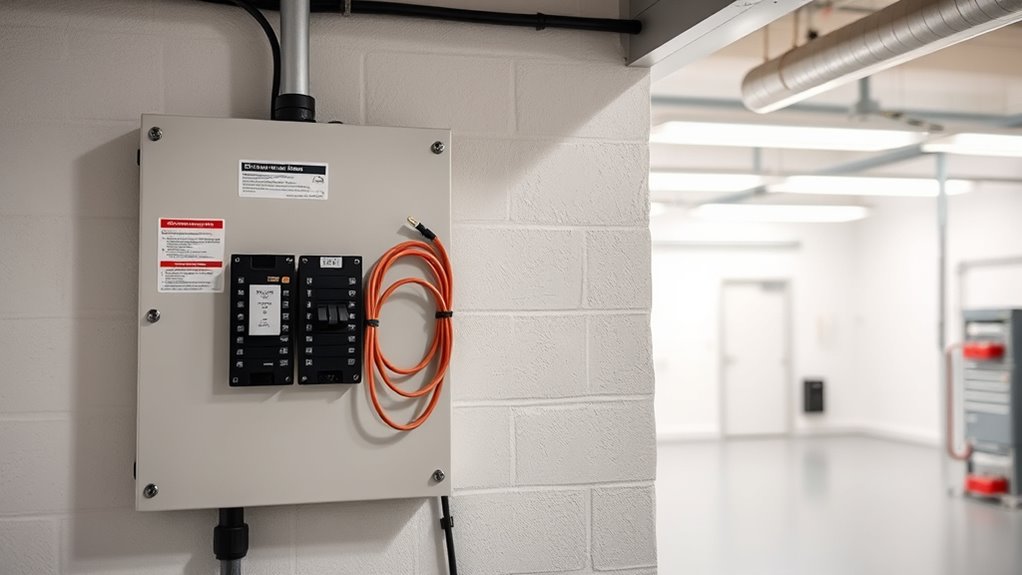
To guarantee a safe and reliable transfer switch installation, you must follow established best practices that prioritize proper wiring, grounding, and secure mounting. Ensuring generator safety starts with correct wiring to handle wiring complexity and prevent hazards. Use quality materials and double-check connections to avoid shorts or loose contacts. Proper grounding is essential to protect against electrical faults and ensure safety during operation. Securely mounting the transfer switch in a dry, accessible location reduces risks and allows easy maintenance. Avoid shortcuts or improvising; professional installation is recommended when dealing with wiring complexity. Remember, a well-installed transfer switch minimizes the risk of electrical fires, shocks, and generator damage, guaranteeing your setup is both safe and effective for years to come. Incorporating self-watering plant pots in your maintenance routine can simplify watering tasks and promote healthier equipment operation.
Frequently Asked Questions
How Long Does It Typically Take to Install a Transfer Switch?
Installing a transfer switch usually takes about 4 to 8 hours, depending on your home’s setup. Your installation timeline can vary based on labor considerations, such as electrical wiring complexity and accessibility. If you have an experienced electrician, the process moves faster. Make sure to discuss the installation timeline beforehand so you can plan accordingly. Proper placement and preparation help guarantee a smooth, efficient installation without unnecessary delays.
Can I Install a Transfer Switch Myself Without Professional Help?
Installing a transfer switch yourself is like trying to assemble a spaceship—possible but risky if you’re not experienced. While DIY installation might save money, it’s best to seek professional assistance to guarantee safety and compliance with local codes. If you’re handy with electrical work, you can attempt it, but don’t hesitate to call in a licensed electrician. Proper installation is vital for reliable power transfer and safety.
What Are the Cost Differences Between Various Transfer Switch Types?
The cost comparison between switch types varies markedly. Manual transfer switches are the most affordable, typically costing between $100 and $300. Automatic transfer switches are pricier, ranging from $300 to over $1,000, depending on capacity and features. You should consider your backup power needs and budget when choosing. While manual switches save money upfront, automatic switches offer convenience and safety, which might be worth the extra investment.
Do All Transfer Switches Require Regular Maintenance?
Not all transfer switches require regular maintenance, but safety considerations are vital. You should check your switch periodically for signs of wear, corrosion, or damage, especially if it’s used frequently or exposed to harsh environments. Regular transfer switch maintenance ensures reliable operation and safety. Always follow manufacturer guidelines and consult a professional if you’re unsure. Proper upkeep minimizes risks and prolongs your switch’s lifespan, keeping your system safe and dependable.
Are There Specific Permits Needed for Transfer Switch Installation?
Yes, you need to check if permits are required for your transfer switch installation. The permitting process varies by location and guarantees your setup meets local code compliance. You should contact your local building department to confirm requirements, submit necessary applications, and obtain approval before starting work. Doing so helps you avoid fines, ensures safety, and guarantees your installation aligns with all regulations.
Conclusion
So, now you’re practically a transfer switch placement expert—who knew? Just remember, ignoring myths and following best practices means fewer sparks and more peace of mind. After all, who needs a backup plan that’s actually backed up? Keep that switch in the right spot, stay safe, and enjoy the power to keep things running smoothly—because, let’s face it, failure is just an inconvenient power outage waiting to happen.
